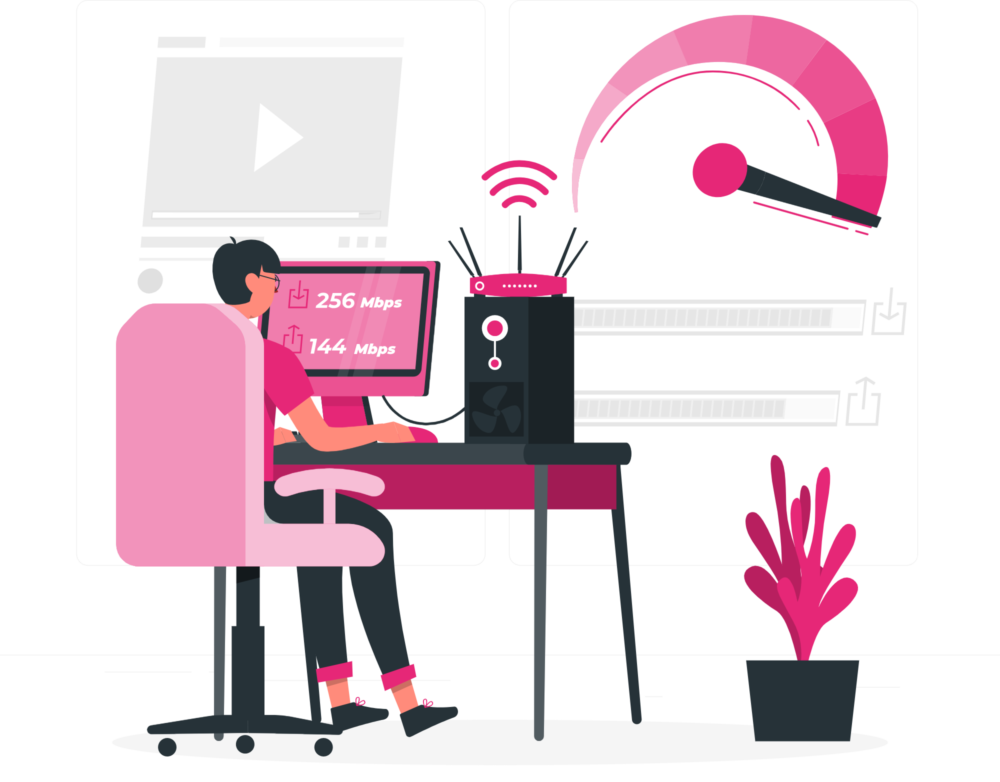The Ultimate Cheat Sheet For Mobile Internet Service And Data Speeds

We use it every day but it’s still so confusing, 4G LTE data, 5G Mobile Internet Service, download speed, broadband connection, what is this all about? In this article, we’ll explore in detail what all the internet lingo really means, and hopefully help you make sense of all that noise.
Almost everyone is now depending on or uses the internet on a daily basis, whether for their personal use, school research, business, or leisure activities. Having fast internet speed helps you finish or perform the task you need more efficiently, such as browsing, streaming, downloading, uploading, and playing video games. A high-speed internet connection is very important, as it allows you to function more efficiently. A fast internet connection helps you run your business as smoothly as possible, and now with the faster 4G LTE and 5G networks, people are moving to mobile internet service more than ever before which means, work can now be done anywhere.
Most of us rate the speed of the internet through its download and upload speed. To make everything clearer, let’s define and differentiate “download speed” and “upload speed.” Download speed is the data being transferred from the internet to a specific computer or machine, while the upload speed is the data sent from a specific computer or machine out to a website or application on the internet, or basically, it is the speed at which your data reaches its destination.
As technology progresses and new smart devices are available, the importance of fast and dependable mobile internet service increases every day. Depending on the technology of the hotspot modem, the speed connection varies, 3G devices being the slowest, while 4G devices are 2 to 5 times faster, and finally, 5G devices being the fastest, delivering up to 1,000 times faster mobile internet service connections than 3G networks.
There are a lot of terms you need to know to learn more about internet speed:
- Bandwidth — It is the number of frequencies a network can access or handle. The higher it is, the faster the internet connection
- Broadband — It is being used to describe or tell how fast your internet connection is and the range of its frequencies
- Bit — It is the most basic unit of information
- Byte — It indicates how much memory is available or being transferred
- Download — It is data being transferred from external sources to your router
- Latency — It is the time required for a signal to travel to its destination
- Mbps — It represents the bandwidth of an internet connection
- MBps — It tells the file size of the data being transmitted
- Modem — It connects the devices on your private network to external global networks
- Ping — It determines if a server is reachable
- Ping Time — It tells how fast a data packet travels to the server and back
- Router — It is a hardware device that facilitates the connection between devices and the network
- Upload — It is the speed at which your data reaches its destination
- Wi-Fi — It is a wireless internet connection that connects the device to hardware
- IOD — It stands for “Internet Of Things”
- 3G — It refers to the third generation of mobile data technology
- 4G — It refers to the fourth generation of mobile data technology
- 5G — It refers to the fifth generation of mobile data technology

There are also different types of internet connection that have their own speed accommodations:
-
Mobile Internet service:
This is the internet used by cell phones, and it is provided by cell phone carriers. It can also be used by mobile hotspot modems which broadcast the signal to other internet devices via Wi-Fi. This is the type of high-speed mobile internet service that My1Wifi.com offers.
- Dial-up:
This is the slowest internet connection since it does not have any broadband connection and just uses a phone line
- DSL:
This stands for “Digital Subscriber Line,” which uses copper wires to accommodate broadband connections. It is faster than dial-up
- Cable:
This uses coaxial cables and is known to have a high-speed connection, but you may also experience slower speeds during peak time
- Satellite:
This one does not rely on wires or cables, but instead, the internet is being delivered wirelessly to the receiver. It can be slower because of long-distance information travel
- Fiber Optic:
It is the fastest internet connection since it uses a fiber-optic cable, which can transmit large amounts of data or information quickly
- ADSL:
This stands for “Asymmetric Direct Subscriber Line.” This is the default type of connection for most internet services. This connection focuses more on download speed instead of upload speed



